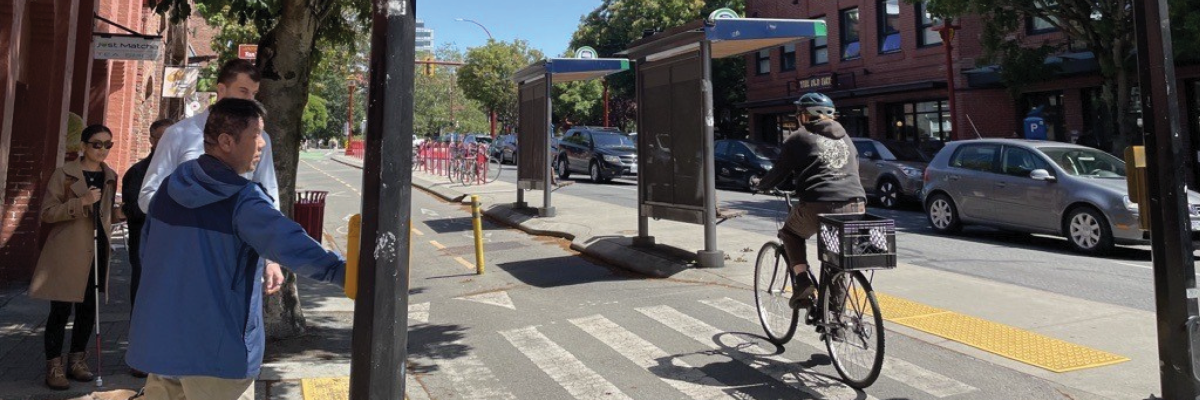By: Tommy Leung
As active transportation becomes more of a focus for municipalities and provinces, bike lanes are being planned and installed in many Canadian cities. One of the by-products of this is that some bike lanes have been placed between sidewalks and bus stops, creating a new type of barrier for people who are blind, low vision, or Deafblind when accessing public buses–commonly known as floating bus stops.
CNIB and other advocacy and consumer organizations have voiced concerns about the safety and accessibility of floating bus stops since their inception.
In 2023, TransLink and BC's Ministry of Transportation & Infrastructure (MOTI) began work on a Design Guide for floating bus stops, and CNIB was one of the many participating stakeholders. Around the same time, we also worked with WSP to conduct a study across five Canadian cities on how floating bus stops impact the mobility of the sight loss community.
Despite some improvements for identification of and wayfinding around, the floating bus stop, the Design Guide for Bus Stops Adjacent to Cycling Infrastructure, released by TransLink and MOTI on April 15, disappointed many in the sight loss community as it did not address the critical issue of the safety of pedestrians who are blind or low vision when crossing an uncontrolled bike lane. This prompted an immediate response from CNIB and the Alliance for the Equality of Blind Canadians (AEBC), urging TransLink and MOTI to reconsider their position. While there were initial positive signs with dialogue between TransLink, what changes will come remains to be seen.
As this continues to be an ongoing accessibility and safety issue for the community, we encourage you to stay informed on this important topic and add your voices to our advocacy efforts, either to your municipality or transit authority.
For more information on CNIB and WSP's detailed research report into cycling infrastructure and pedestrian safety, access our floating bus stop report and recommendations.
